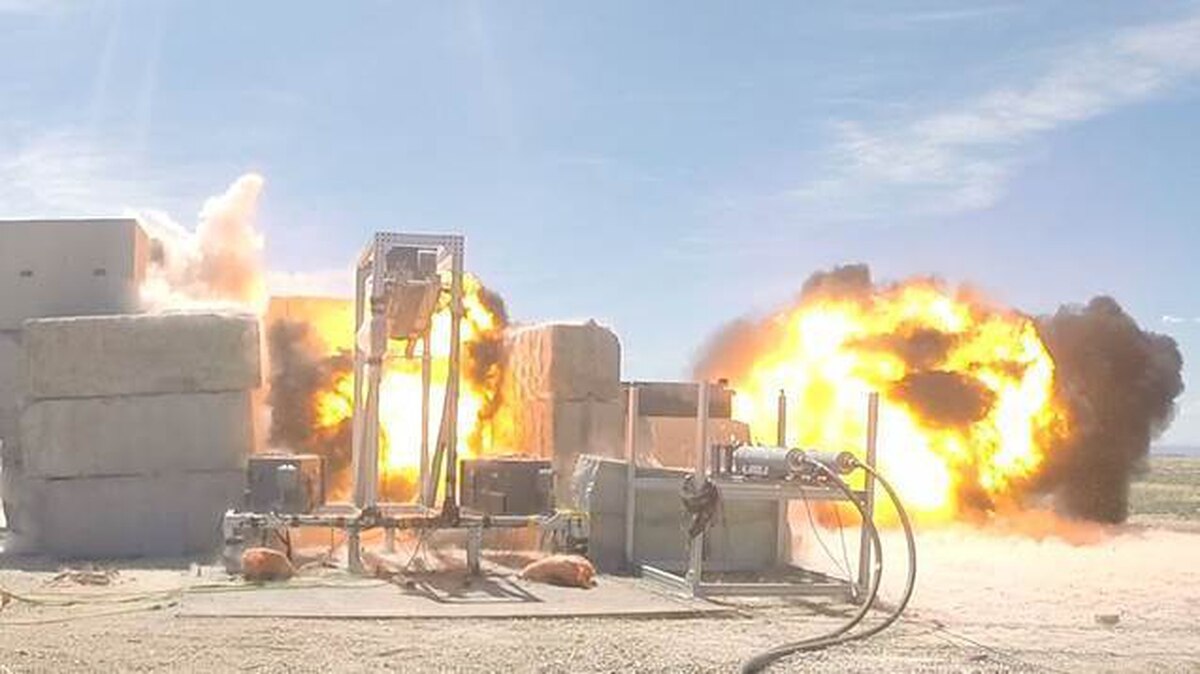
BY KELSEY REICHMANN | defensenews.com June 20, 2019
WASHINGTON — The U.S. agency responsible for making explosive materials used in nuclear weapons is facing challenges that could impact the country’s planned modernization of its nuclear arsenal, according to a report by the Government Accountability Office.
The National Nuclear Security Administration, a semiautonomous agency within the Energy Department, is facing three main challenges, according to the report: a dwindling supply of explosive materials, aging and deteriorating infrastructure, and difficulty in recruiting and training qualified staff.
This report comes amid congressional debate over the cost of modernizing the U.S. nuclear arsenal, an effort driven by President Donald Trump.
NNSA’s supply of materials, which are “highly specialized” with specific chemical and physical characteristics, are in low supply, the report says. Furthermore, the NNSA is lacking the knowledge base to produce the materials, as the recipes to make them were not well-documented, or the processes themselves infrequently practiced, the report notes.
Challenges in obtaining materials is not a new issue for the NNSA, the watchdog notes. The agency experienced a similar situation with a material known as “Fogbank,” and the GAO reported in March 2009 that the NNSA lacked the knowledge to manufacture the material — leaving the process for Fogbank “dormant for about 25 years.”
Fogbank is used in the production of the W76-1, a warhead for the Navy’s Trident ballistic missile. Under the Trump administration’s plans for a new low-yield nuclear weapon, the U.S. is making a W76-2 variant, which entered production earlier this year.
The GAO notes that when the NNSA is actually able to replicate formulas for materials, procuring those materials has proved challenging, given the irregular and small order specifications to contractors.
But the GAO identifies aging infrastructure as the greatest risk to the NSSA.
“The NNSA 2019 Master Asset Plan states that 40 percent of the explosives infrastructure of NNSA’s sites is insufficient to meet mission needs, which can lead to contamination of explosive products or limit the use of facilities,” the report says. It notes that contamination has already occurred from rust falling off rafters and grass blowing through cracks in the walls, contaminating batches of explosives.
Aging facilities must receive updates to modern safety standards to protect employees, the GAO says. The Los Alamos High Explosives Chemistry Laboratory, for example, was built in the 1950s and has struggled to adopt to modern instrumentation, according to the report.
Facilities also deal with limited storage, the report says, meaning explosives can be stored in a single location where they could potentially cause a chemical reaction.
The report also cites NNSA documents that describe challenges in recruiting qualified staff, who often must have a security clearance. For example, Pantex, a contractor hired by the agency, in 2018 estimated it would need 211 full-time staff members. However, in November that year, it reported only 172 full-time employees. Officials with agency contractors told the GAO that the problem is largely due to the competitive industry; in particular, Pantex competes with oil and gas companies in Texas. The company has now expanded its recruitment efforts to include local colleges and universities, the report says.
In a written response to the report, the head of the NNSA, Lisa Gordon-Hagerty, said the “GAO’s observations and recommendations are consistent with [the Department of Energy]/NNSA’s recent efforts to centralize management of energetic material.”
The Office of Safety, Infrastructure, and Operations previously identified many of the infrastructure data issues presented in the report and developed a series of actions aimed at improving the accuracy of asset data,” she wrote. “These efforts have already resulted in improved data quality, and the accuracy and consistency of data will continue to improve as additional actions are completed.”
Original article: https://www.defensenews.com/global/the-americas/2019/06/19/government-watchdog-finds-3-issues-disrupting-us-nuclear-modernization-efforts/
